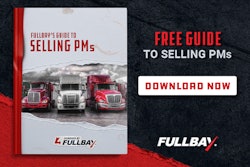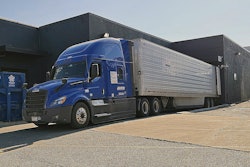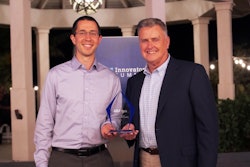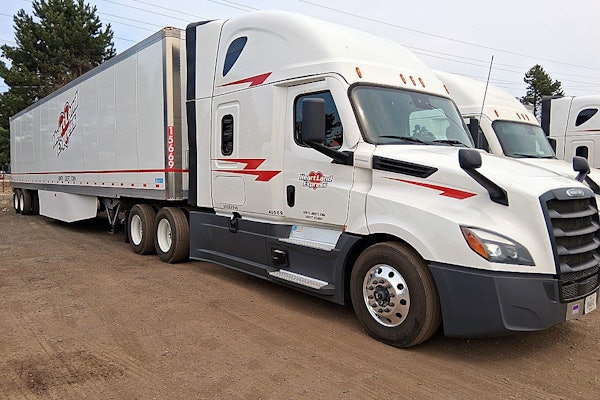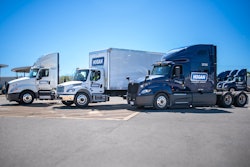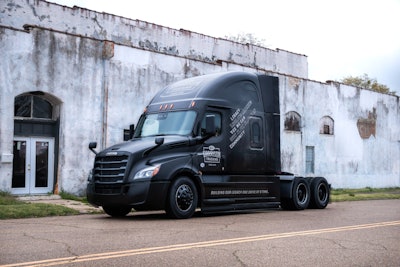
CCJ Innovators profiles carriers and fleets that have found innovative ways to overcome trucking’s challenges. If you know a carrier that has displayed innovation, contact CCJ Chief Editor Jason Cannon at [email protected] or 800-633-5953.
Operational costs are steadily rising, making it more important than ever to find strategic ways to reduce expenses and improve efficiency.
R.E. Garrison Trucking (CCJ Top 250, No. 110), headquartered in Cullman, Alabama, was looking for ways to reduce expenditures amid the industry’s economic downturn.
Established in 1959, the asset-based carrier offers logistics and freight management services. With more than 800 drivers and 250-plus non-driving employees, it has terminals in Alabama, Florida, Oklahoma and Georgia, as well as service techs across eight cities.
“It’s been a difficult period over the last two and half years, and we as a company have been looking for opportunities to cut costs in different areas,” said Karen Fuller, director of maintenance and yard management. “As I looked closely in maintenance, I felt there was an opportunity to significantly be able to reduce the cost.”
Fuller led an initiative to reduce maintenance costs that started with implementing the Traction program, which involves keeping track of various data metrics the company is trying to improve, identifying areas for improvement and driving consistent progress. Developed by author Gino Wickman, it’s a business management system to help improve a company’s efficiency.
“You take each department and break down what are their measurable (KPIs),” explained Fuller.
Initially started at the C-suite level last year, the carrier began carrying it out to all managers and technicians in the maintenance department about six months ago.
As part of the system, Fuller said the carrier held weekly meetings for each department, manager, and location. Each team and location set specific goals and key performance areas.
For example, one key focus is driver satisfaction. After service is completed, Fuller said drivers are contacted directly to gather feedback for satisfaction surveys, including what went well and what could be improved at each shop location.
These are some of the factors tracked in the maintenance department:
- Preventative maintenance services: Tracking how many pieces of equipment are due for service and striving to stay ahead of schedule.
- Tire costs and usage: Monitoring how long tires last and assessing whether they’re maximizing their lifespan by proactively addressing potential issues.
- Satisfaction score: Tracking how effectively the company is serving its drivers. To gather this feedback, a designated team member reaches out directly to drivers for their input.
- Maintenance services: Tracking not just routine maintenance services like oil changes and federal inspections, but in-depth services such as overhead adjustments, transmission oil changes and other critical filters to help maintain warranty compliance and reduce avoidable breakdowns.
- Parts spend: Analyzing if parts purchased are within target and explore alternative vendor options to reduce costs.
- Labor rates: With industry labor rates up, Fuller said the team seeks balanced solutions to keep both drivers and dealer partners successful.
Analyzing financial data also plays a major role. Instead of waiting until the end of the month to assess financial performance, Fuller said key metrics are monitored weekly to enable a proactive approach.
 R.E. Garrison Trucking
R.E. Garrison Trucking
In addition to internal improvements, Fuller said the carrier focused on strengthening relationships with vendors. By doing so, it has allowed the company to negotiate better pricing on parts, reduce costs, and ensure more consistent support nationwide when equipment required repairs or servicing.
This started by having quarterly meetings with vendors to improve common issues and offer feedback or solutions to strengthen relationships. It evolved from not only being able to speak and talk freely in meetings to having an established relationship wherein, Fuller said, the carrier can say to vendors, “This is a problem. You’re seeing another side of it; do you have a solution? How can you help?”
The team also took a closer look at the technology the company had in place.
“We started utilizing it in a way to benefit us on the maintenance program,” Fuller said, which led to improved reporting, giving greater visibility into the condition and performance of the company’s equipment, both in shops and out on the road. For maintenance operations, Fuller said the company uses fleet maintenance management software Cetaris to gather data, while they utilize TMS provider McLeod Software for accounting. The team holds regular meetings via Microsoft Teams to track metrics across various areas.
The results
So far, the program has resulted in a 15% reduction in maintenance costs.
“We’ve seen positive feedback in it because there is no guesswork of what our goals are. It’s very open and transparent,” Fuller said.
Another aspect has been an overall improved relationship with the company’s driving partners.
“I believe it’s had a positive impact with them because in this process, we’ve been very open with all of the drivers (about) what we want to do, why we want to do it,” Fuller said. “As we do that, it also becomes a culture with the drivers. They become familiar with it… It’s been an education and relationship building across all departments.”
One of the key outcomes was the inspiration to expand into other programs, such as a system connected to the carrier’s trucks that identifies issues like check engine lights. Fuller said that led to the use of data to get ahead of potential problems before the driver calls it in.
It also encouraged the company to educate drivers on the different codes on the truck. Fuller said in addition to maintenance technicians, educating drivers, driver managers and customer service associates on things like fault codes, preventative maintenance, fuel efficiency, idling habits, and tire pressure, has led to additional improvements.
“Educating all of those (people) ultimately adds up to a big difference,” she said.
Another unexpected insight was the amount of detailed tire data for their trucks and trailers, from fuel efficiency and air pressure to how tires should be rotated or matched to specific lanes or regions. Fuller said small adjustments based on that data have made a significant impact.
We often assume that big results require big changes, but in this case, Fuller said little change led to a large result.
The CCJ Innovators program is sponsored by Comdata, ExxonMobil, Fleetworthy and Mack Trucks.

